Table of Contents
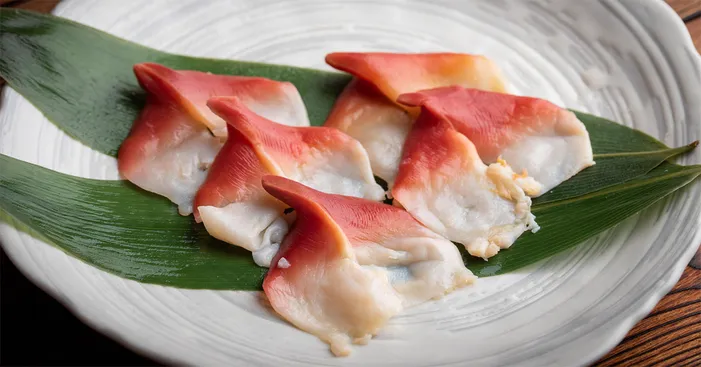
Imagine this: you crack open a pearly white shell, and a plump, glistening morsel emerges.
Not just any morsel, but aHokkigai clam, a treasure of the ocean depths revered for its sweet, briny flavor and melt-in-your-mouth texture.
But these mollusks are more than just culinary delights; they’re a journey into the heart of Japanese culture, where their delicate dance on the palate has tantalized taste buds for centuries.
So, buckle up, seafood lovers!
This blog post is your deep-sea dive into the world of Hokkigai clams.
We’ll explore their unique biology, savor their culinary versatility, and uncover the cultural significance they hold in Japan.
Get ready to be surprised, enlightened, and maybe even a little bit hungry.
Let’s crack open the secrets of these captivating creatures, one delicious bite at a time!
Hokkigai Overview:
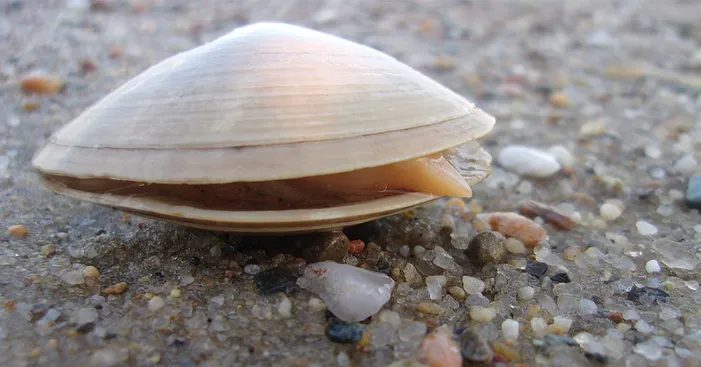
While Hokkaido, Aomori, and Miyagi in Japan boast the largest harvests of Hokkigai clams, these treasures often grace the shelves of supermarkets nationwide.
Known as “Kitayorikai” in Japanese, meaning “North Ocean Shellfish,” these clams inhabit the chilly northern seas, as their name implies.
Hokkigai clams truly shine during the cold winter months, with their season peak running from December to February.
While most catches occur in summer, past distribution limitations meant they were primarily available in the Kanto region (Japan) during warmer months.
Thankfully, these days, enjoying them year-round is a delicious reality.
Contrary to popular perception, these clams aren’t naturally red.
This vibrant hue appears during cooking, transforming the initially black part.
Conveyor-belt sushi restaurants usually offer hard, pink clams imported from Russia or Siberia, pre-cooked and frozen.
However, domestically caught Hokkigai clams boast a distinct advantage: their soft, sweet, and deeply satisfying flavor.
Hokkigai nutritional values and health benefits:
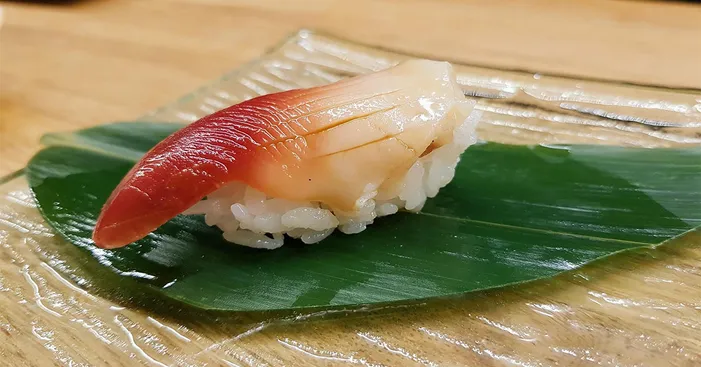
These data counts for 3.5 ounces (100g) of hokkigai clams:
- Calories: 73
- Protein: 11.1g
- Fats: 1.1g
- Sugars: 3.8g
- Ashes: 1.9g
- Calcium: 5%
- Magnesium: 19%
- Iron: 45%
- B12 vitamin: 95%
- Taurine: 100%
- Alanine: 82%
- Glycine: 68%
These cold-water wonders, known as Hokkigai clams or fire scallops, pack a powerful punch of flavor and health benefits.
With just 73 calories per 100 grams, they’re a low-fat, protein-rich addition to any seafood lover’s diet.
But they offer much more than just satisfying taste buds.
Taurine Powerhouse:
Forget energy drinks, hokkigai clams boast an impressive 2,519 milligrams of taurine per 100 grams, almost double the amount found in oysters.
This unique amino acid-like substance supports heart health by regulating blood pressure, cholesterol, and triglycerides.
It even aids liver function and promotes healthy brain development in infants.
The Flavor and Health Boost:
Alanine and glycine, two key amino acids in clams, offer both taste and health benefits.
Alanine helps the body process alcohol and protects the liver, while glycine keeps blood pressure in check and contributes to delicious umami flavors.
So, you get the full taste experience while reaping the health rewards!
Mineral Medley:
Packed with magnesium, calcium, phosphorus, and iron, hokkigai clams support various bodily functions.
Magnesium fuels your energy, calcium, and phosphorus build strong bones and teeth, and iron delivers oxygen throughout your body.
Vitamin B12:
As if the other benefits weren’t enough, hokkigai clams are also brimming with vitamin B12, essential for red blood cell production.
Deficiency can lead to anemia and other neurological issues, so incorporating these clams into your diet helps ensure optimal health.
Precautions before you consume hokkigai:
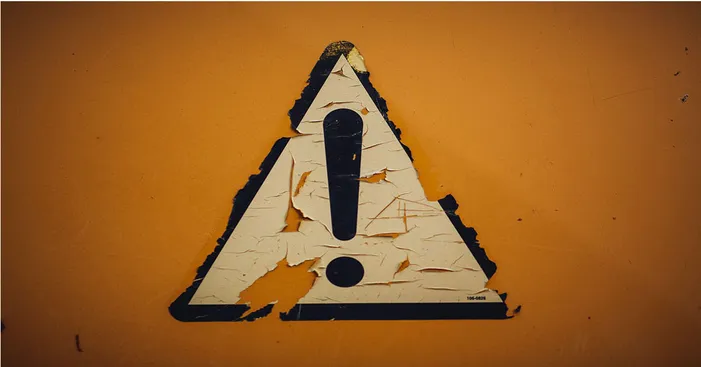
Hokkigai offers a delicious treat, but whether you indulge raw or cooked depends on your preferences and risk tolerance.
Raw Consumption: A Balancing Act
Many enjoy hokkigai clams raw, particularly in sashimi or sushi. However, this comes with potential parasite risks.
Himobilus, while resembling larvae, are harmless.
Still, removing them ensures a more aesthetically pleasing experience. Anisakis, however, poses a greater threat.
This parasite requires freezing at -20°C for 24 hours or thorough cooking above 60°C for at least a minute to eliminate it.
To ensure safe raw consumption, freezing beforehand is highly recommended.
Pregnancy and Early Life Considerations
Pregnant and breastfeeding women, as well as young children, have weaker immune systems, making them more susceptible to food poisoning.
Even small amounts of raw hokkigai clams can be dangerous, with potential risks like diarrhea and uterine contractions in pregnant women.
For these groups, cooked hokkigai clams offer a safer and equally nutritious option.
Using hokkigai:
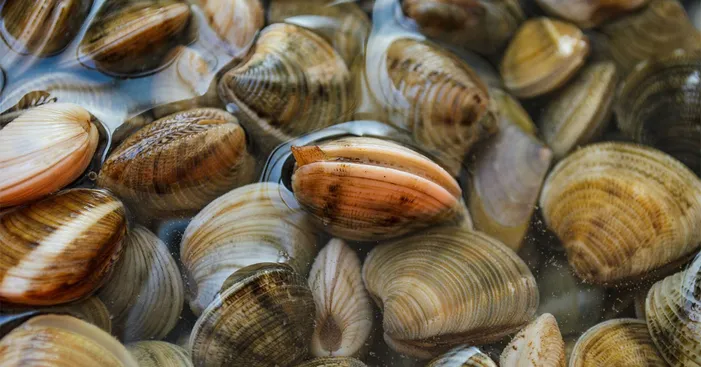
Hokkigai clams boast a thick, juicy texture and abundant umami flavor, thanks to the presence of glycine and alanine.
While commonly enjoyed raw as sashimi or sushi, these versatile mollusks shine in a variety of dishes when exposed to heat.
Grilling, boiling, baking, and even frying each unlock unique taste and texture profiles.
For those seeking a quick burst of intense flavor and sweetness, Hokkigai clams excel in shabu-shabu or on the grill.
Cooked briefly, they retain their delightful tenderness, delivering a satisfying umami punch.
However, be mindful of overcooking, as this can transform the delicate flesh into a rubbery texture.
The key lies in achieving a perfect balance, leaving them partially raw to capture their peak deliciousness and sweetness.
So, next time you encounter Hokkigai clams, don’t limit yourself to just raw preparations.
Embrace the culinary canvas they offer and explore the exciting world of flavors and textures unlocked by different cooking methods.
Remember, the key is to respect their delicate nature and cook them just enough to coax out their hidden treasures.
Tomatoes Stuffed with Hokkigai clams and Asparagus
Ingredients:
- 4 medium tomatoes
- 1 pound (454 grams) asparagus, trimmed
- 1 can (14.5 ounces) Hokkigai clams, drained and chopped
- 45 milliliters (3 tablespoons) melted butter
- 30 milliliters (2 tablespoons) maple syrup
- 30 milliliters (2 tablespoons) water
- 1 clove garlic, minced
- Ground black pepper to taste
Preparation:
- Prepare the Tomatoes:
- Wash and dry the tomatoes. Using a sharp knife, remove the tops and carefully scoop out the flesh, leaving a shell-like shape about 1/2 inch thick. Place the hollowed tomatoes upright on a plate.
- Cook the Asparagus:
- Bring a small pot of water to a boil. Add the asparagus spears and cook for 8 minutes, or until tender-crisp. Drain and set aside.
- Stuff the Tomatoes:
- Cut the asparagus into thirds and arrange them upright inside each tomato cavity. Divide the chopped Hokkigai clams evenly among the tomatoes.
- Create the Dressing:
- In a small bowl, whisk together the melted butter, maple syrup, water, garlic, and black pepper. Heat the dressing in the microwave for 30 seconds, or until warm.
- Bake and Serve:
- Preheat your oven to 375°F (190°C). Pour the warm dressing over the stuffed tomatoes and bake for 15-20 minutes, or until the tomatoes are heated through. Serve immediately, garnished with fresh herbs like parsley or dill if desired.
Savory Surf Clam Gratin: A Simple Indulgence
Ingredients:
- 1 can (drained) of Hokkigai clams
- 1 tablespoon of olive oil
- 1 tablespoon of butter
- 1 clove of garlic, finely minced
- A pinch each of black pepper, oregano, and Italian seasoning
- 1 teaspoon of fresh chives, chopped
- Grated cheese of your choice (cheddar, parmesan, or a blend all work well)
Preparation:
- Heat the olive oil and butter in a skillet over medium heat. Add the minced garlic and spices, stirring constantly until fragrant.
- Gently introduce the drained hokkigai clams, taking care not to break them. Sauté for just a minute to warm them through – overcooking can make them tough.
- Transfer the clam mixture to a preheated ovenproof dish.
- Sprinkle generously with your chosen grated cheese.
- Bake at 375°F for 10-15 minutes, or until the cheese is melted and bubbly.
- Garnish with the chopped chives for a pop of freshness.
A Refreshing Clam Salad Twist with Teriyaki Flair
Ingredients:
- 1 can (5 oz) Hokkigai clams, drained and chopped
- 2 shallots, finely chopped
- 1/4 bag julienned carrots (about 1 cup)
- 2 stalks celery, thinly sliced
- 1/2 green chili pepper, diced (adjust to your spice preference)
- 2 tablespoons teriyaki sauce
Preparation:
- In a large bowl, combine the chopped shallots, julienned carrots, and sliced celery.
- Dice the green chili pepper to your desired level of heat and add it to the bowl.
- Drain the clams thoroughly and chop them into bite-sized pieces. Add them to the bowl with the vegetables.
- Drizzle the teriyaki sauce over the salad and toss gently to coat all ingredients evenly.
Storing hokkigai:
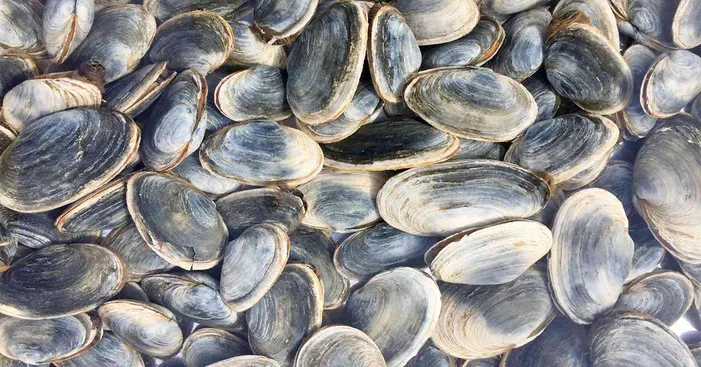
Hokkigai clams are known for their resilience.
If you plan to cook them within a week, you can keep them refrigerated in their shells.
However, for optimal taste and texture, it’s best to consume them within 2-3 days after shucking.
Here’s a guide to storing these delicious clams:
In the Shell:
Fresh Hokkigai clams can last for approximately a week in the refrigerator if stored properly.
Simply keep them in their shells and place them in the coldest part of your fridge.
Avoid stacking the clams as this can restrict airflow and reduce their lifespan.
Shucked Clams:
If you plan to enjoy the clams without their shells, shuck them just before cooking.
Shelled clams have a shorter shelf life and should be consumed within 2-3 days.
Store them in a sealed container in the refrigerator.
Freezing for Later:
While freezing doesn’t affect the safety of the clams, it can compromise their texture and flavor.
If you must freeze them, briefly boil them first.
After boiling, remove the clams from their shells and drain any excess water.
Wrap the cooled clams individually in plastic wrap and place them in a labeled freezer bag.
Remember, frozen clams will have a different texture and taste compared to fresh.
Tip:
For the most enjoyable experience, enjoy your Hokkigai clams as fresh as possible.
But with proper storage techniques, you can extend their shelf life and savor their unique flavor even over a few days.
Conclusion:
Hokkigai delicacy, the Arctic surf clam, boasts not only exquisite taste but also vital ecological functions.
Learn all about these fascinating bivalves – their habitat, rich nutrient content, and role in the marine ecosystem.
We’ll also delve into the delectable ways to savor them, from the raw and refreshing to the hearty and comforting.
Hokkigai clams offer a versatile culinary adventure.
Enjoy them raw, their natural sweetness singing on your tongue.
Savor their plump texture when boiled, grilled, or fried.
Craving a creamy twist?
Add them to your favorite curry for a burst of seafood delight.
Don’t let preparation be a barrier – frozen options abound, making it easy to incorporate these gems into your meals.
So, dive into the world of Hokkigai clams – explore their ecology, savor their versatility, and embark on a delicious journey, perhaps culminating in that special Tomakomai clam curry experience.
